
How to Test Your Product With Dogfooding: Guide to Internal Beta Testing
Testing a product through dogfooding is an essential phase in product development that provides invaluable insights into a product's real-world usage. Using products internally within the company can help identify issues and understand user experience uniquely. This method serves not just as quality assurance but as a form of empathy-driven development, where company employees become first-hand product users.
Implementing dogfooding effectively ensures product teams catch potential glitches or design flaws before they reach customers. It encourages a culture of critical evaluation and continual improvement within your team, fostering a deeper connection to the product and a shared responsibility for its success. This practice helps ensure that your product's quality and usability are thoroughly vetted, enhancing customer satisfaction and trust in your brand.
What Is Dogfooding?
Dogfooding, or eating your own dog food, is a practice where a company uses its own product to test and validate the quality and functionality of the product in a real-world scenario. The term is widely accepted to have originated at Microsoft in the 1980s when a manager challenged the team to use their product to demonstrate its reliability and effectiveness.
Dogfooding is a critical step in a product's development that can set the stage for its success and ensure a higher level of quality. It's a tactic where you use your product internally to work out any kinks before it goes live to customers.
Dogfooding vs. Beta Testing
Dogfooding differs from beta testing, although both are forms of user testing. Beta testing is typically done by releasing a pre-market product version to external users, who provide feedback incorporated into the final version. In contrast, dogfooding involves your team using the product in everyday tasks to ensure product quality better firsthand.
Key Principles of Dogfooding
When you implement dogfooding in your product's development cycle, there are several fundamental principles to follow:
- Early and Continual Use: Use the product as early as possible and keep using it throughout development.
- Authentic Feedback: Encourage your team to provide honest, direct feedback to facilitate genuine improvements.
- Diverse Inclusion: Ensure that various departments and levels of staff use the product to get a broad range of insights.
- Iterative Process: Use the feedback to make iterative improvements, continuously enhancing the product's quality.
Who Implements Dogfooding?
In your organization, dogfooding is typically implemented by various stakeholders with varied roles and responsibilities. Here's who generally gets involved:
- Product Managers: PMs lead in coordinating dogfooding efforts, ensuring that the product is used internally to mimic how end-users will interact with it.
- Quality Assurance (QA) Engineers: QAs perform formal testing procedures and participate in dogfooding to uncover issues that might not surface during standard testing routines.
- Customer Support Staff: By using the product, customer support and operations teams can better empathize with customers' experiences, leading to enhanced support and more insightful feedback for the development team.
- Sales and Marketing Teams: Even if the sales team focuses on selling the product, using the product personally can inform your sales strategies and help effectively tailor your marketing message to highlight features and benefits.
- Developers: A developer is not responsible only for coding but also for using the product actively to identify bugs or areas of improvement from a technical standpoint.
How to Test Your Product With Dogfooding or Internal Beta Testing
Dogfooding, also known as eating your own dog food, is a method where an organization's employees use their own product to test and validate its functionality. This approach to internal beta testing can identify bugs, streamline the quality assurance (QA) process, and refine user experience through firsthand feedback.
1. Setting Clear Goals
Define what you want to achieve: Your objectives might include identifying bugs, understanding user experience, or verifying the performance under real-world conditions. Make sure your goals are SMART: Specific, Measurable, Achievable, Relevant, and Time-bound. For example:
- Identify and fix significant bugs before the next product development cycle.
- Improve user interface intuitiveness based on feedback from non-dev colleagues.
2. Selecting The Right Participants
Choose your internal testers wisely: Look for a diverse group from various departments like project management (PM), development (dev), and public relations (PR) to cover different perspectives. Ensure that they are actual representative product users and have the capacity and willingness to provide different types of customer feedback.
3. Launching Internal Beta Test
To start internal beta testing, designate when your team uses the new product in their daily tasks. Create a schedule and ensure all departments align with the testing objectives to validate product ideas.
Please provide them with specific scenarios and tasks that cover the entire range of product features for research. This integrated approach helps spot potential errors and bugs more effectively and collect them as beta testing feedback with in-app feedback widgets.

4. Monitoring Product Interactions
During the testing phase, monitor how your team interacts with the product. Use analytics tools or log files to track usage patterns, identify common pain points, and note unexpected product behavior. It's essential to observe the functionality and intuitiveness of the user interface, which can significantly affect user satisfaction.
5. Collecting and Analyzing Feedback
Encourage your testers to provide detailed feedback, not only on malfunctions but also on their overall user experience. This could include suggestions for improvement or highlighting features they found particularly useful.
- Regular Check-ins: Schedule regular meetings or surveys to collect and analyze feedback by efficiently sorting and filtering feedback based on votes, tags, and user segments with tools like Rapidr.
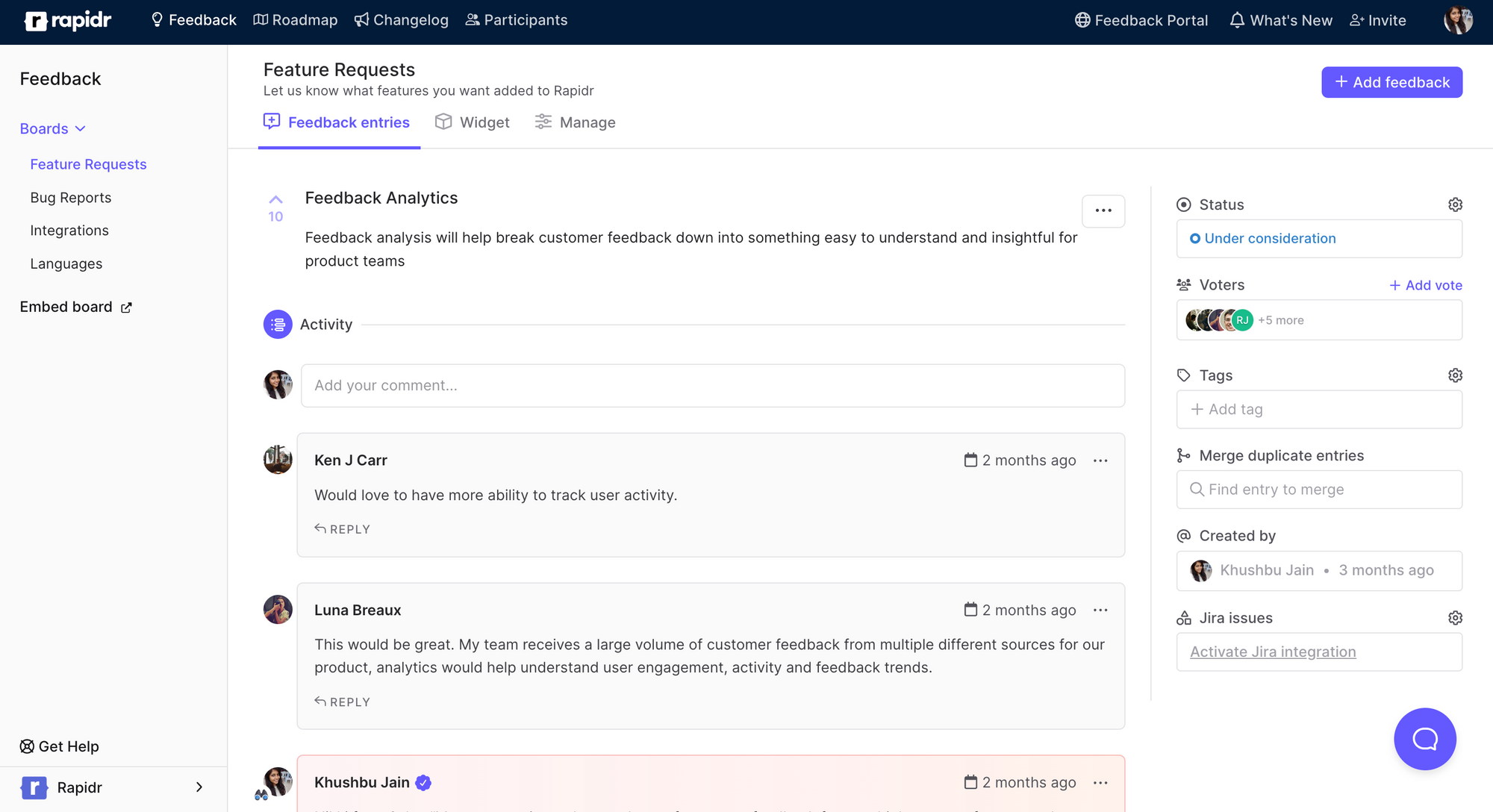
- Centralized Feedback System: Use a centralized system to collect and manage feedback, making it easier to track and analyze. Use product feedback solutions like Rapidr to collect and manage customer and internal team feedback.
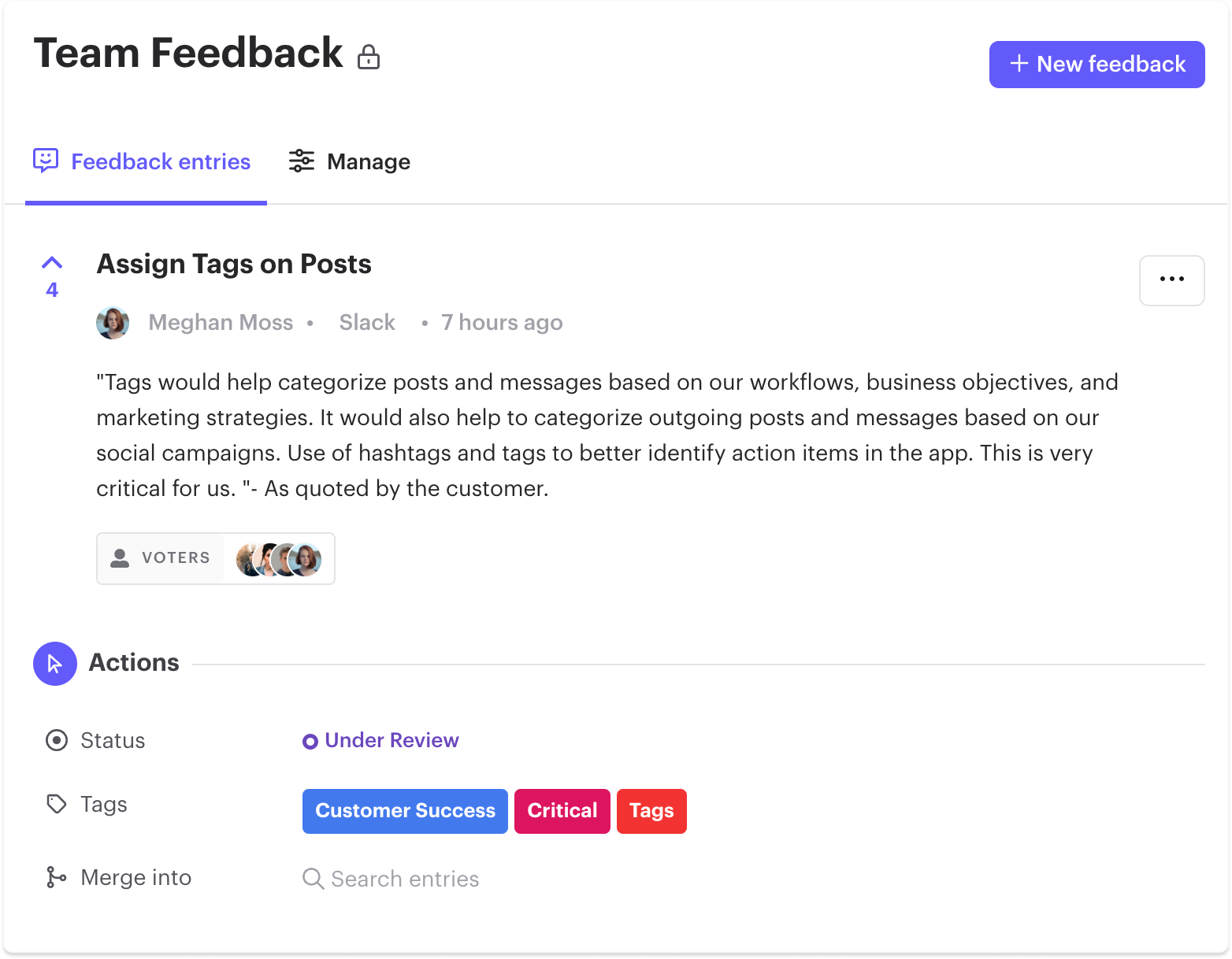
6. Implementing Feedback
Compile this feedback in a structured manner, often using open-ended customer feedback question surveys or a customer feedback tool, prioritize it based on the product development goals, and iterate your product based on these insights to enhance quality and user satisfaction before full release.
- Prioritize Issues: Identify and prioritize issues based on severity and impact. Analyze customer feedback to drive improvements in your product. Showcase prioritized ideas and features, customer and team feedback received, most voted and highly discussed ideas, and their respective statuses in a public product roadmap.
- Iterative Improvements: Implement changes based on feedback and release updates for further testing. As merely collecting feedback isn't enough, not acting on user feedback is costly.
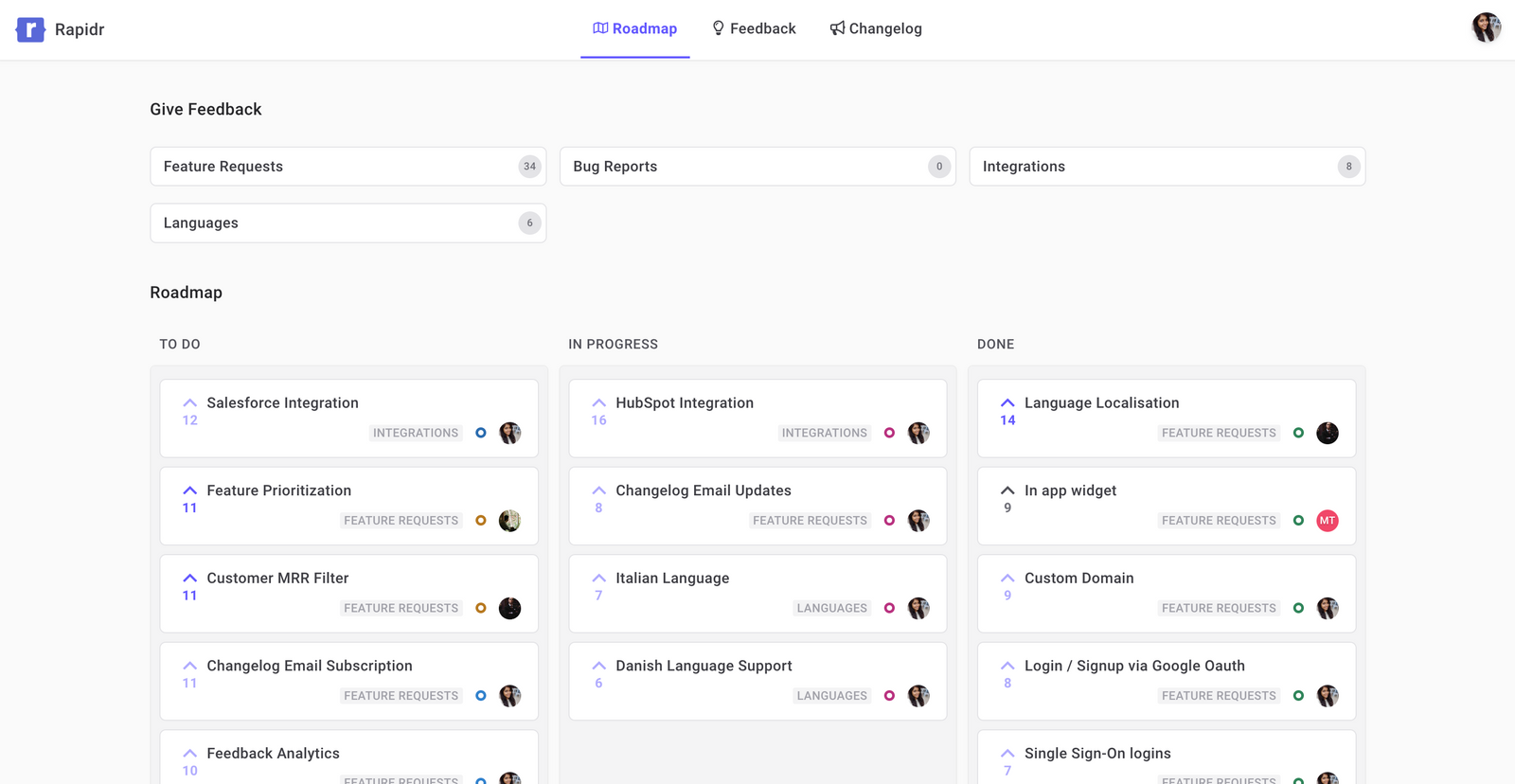
7. Closing The Feedback Loop
Establish a clear and accessible feedback mechanism: This can range from a simple shared document to a dedicated feedback collection tool. Ensure there's a system for analyzing and prioritizing feedback to facilitate practical analysis.
Essential components include a straightforward way for testers to report their experiences, issues, or suggestions and regularly scheduled meetings to discuss feedback and track improvements to close the feedback loop.
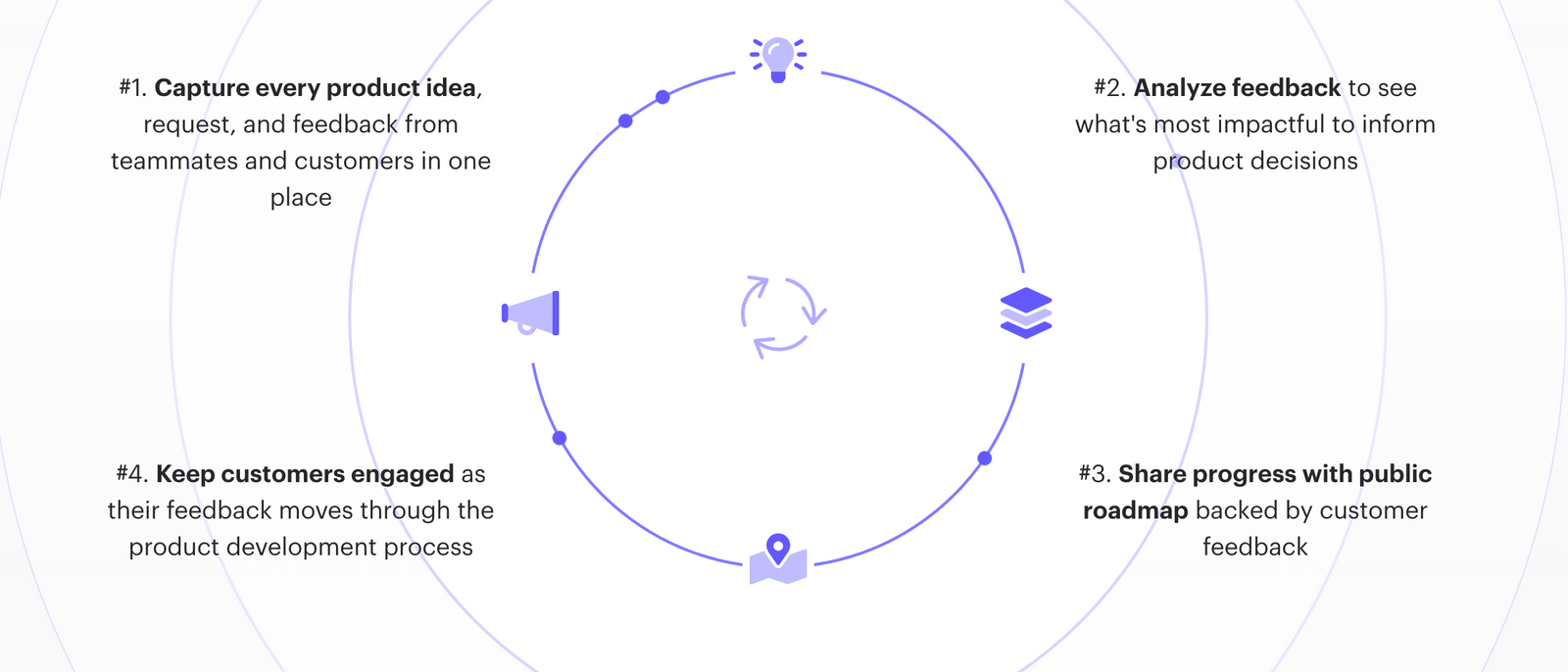
Benefits of Dogfooding
When you apply dogfooding to test your product, assessing how it affects product development and quality control is vital. Your ability to effectively measure outcomes, analyze quality improvements, and address discovered issues can significantly enhance your product's design and support.
1. Measuring the Impact on Product Development
Product Development heavily relies on actionable feedback. With dogfooding, your development team can track the implementation's timeliness and relevance to user needs.
- List of Validated Features: List the features your internal team has tested, prioritizated, and signed off on.
- Early Bug Detection: Employees use the product in real-world scenarios, which helps uncover practical issues and bugs that might not be detected in a controlled testing environment.
- Continuous Improvement: Regular usage and feedback lead to ongoing improvements, enhancing the product's quality before it reaches external users.
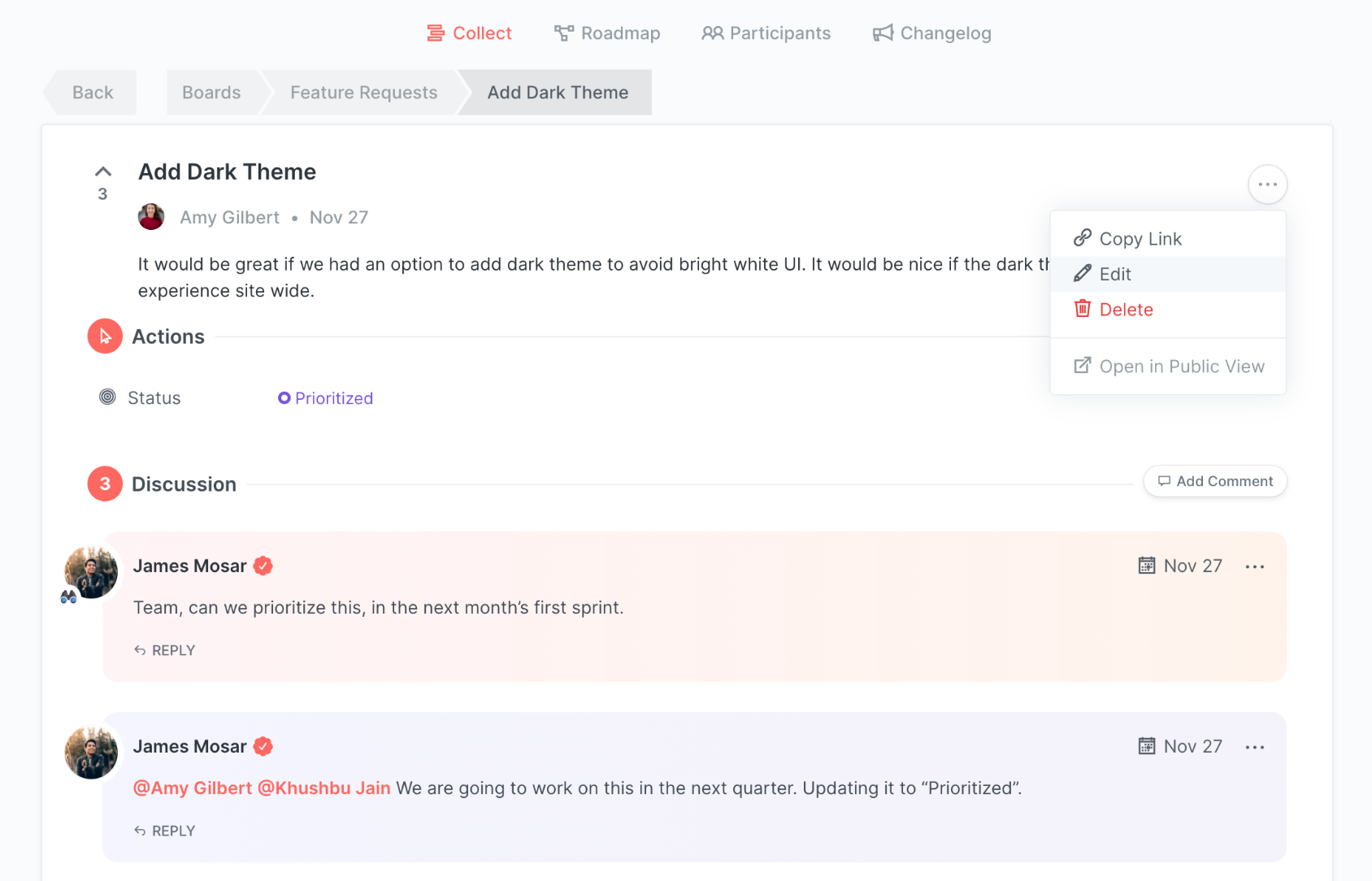
2. Enhancing User Experience
Gather qualitative data from your team's product interaction to inform design improvements.
- Authentic User Feedback: Employees are genuine users who can provide honest feedback on the user experience, usability, and functionality. Effective communication strategies, such as publishing bug fixes and new features, can prevent user misunderstandings.
- User-Centric Design: Product feedback is invaluable for making user-centric improvements, ensuring the product is more intuitive and user-friendly.

3. Addressing the Discovered Issues
By accurately evaluating these areas, you enhance the chances of your product to meet internal standards and exceed customer expectations, potentially increasing sales. Once you reveal bugs and other concerns, prioritize and strategize your approach:
- Quick Fixes vs. Strategic Overhaul: Decide whether an immediate solution or a longer-term redesign is necessary.
- Resource Allocation: Determine if your support and development teams need additional resources to address these issues effectively.
- Maintain Transparency: This builds trust and shows customers that their opinions are valued and acted upon. When you release new features or updates, share your findings with all team members, including product team members, from designers to developers to marketers, to drive decision-making.
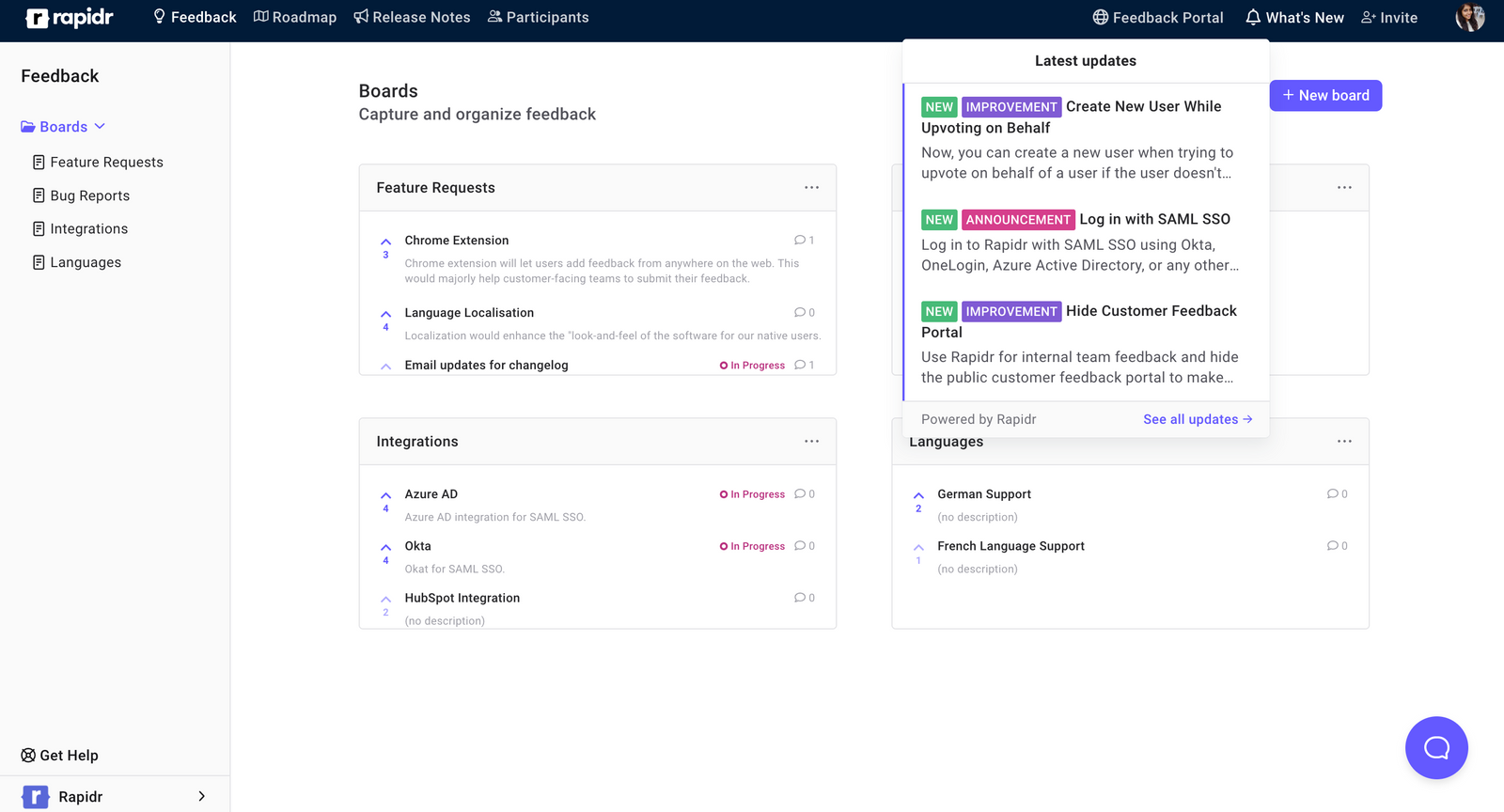
4. Enhancing the Sales and Marketing Strategy
Your sales team can more effectively promote a product they have firsthand experience with. Integrating dogfooding into your business routine empowers your sales pitches with authentic product knowledge and use cases that resonate with prospects.
Similarly, for marketing, authentic insights from internal use can be transformed into compelling campaigns enriched with real-use cases, bolstering the credibility of your messaging and improving product discovery.
5. Fostering Company Culture and Employee Engagement
Dogfooding reflects a transparent and inclusive company culture; it signals that every team member's feedback is valued. This practice encourages employees to participate in product development, boosting engagement and lowering support costs, as internal feedback can pinpoint issues before they reach the customer.
In contrast to outsourcing testers, dogfooding promotes a sense of ownership and pride among employees, further strengthening company culture. By embedding the principle of dogfooding in your business strategy, you leverage a dual advantage: enhancing your product-market fit externally while nurturing a robust, product-centric culture internally.
6. Cost-Effectiveness
Dogfooding can be more cost-effective than some external testing methods, as it utilizes existing resources within the organization. It also maximizes the utility of internal resources by combining product development with practical usage.
Examples of Companies Using Dogfooding
When you're aiming to refine your product, dogfooding is a strategy you might explore. Renowned organizations often adopt this practice to enhance their offerings.
1. Microsoft
Microsoft is famous for its long-standing practice of dog food. Employees regularly use beta versions of their software, such as Windows and Office, before releasing them to the public. This approach has helped Microsoft to identify and fix bugs, improve user interfaces, and better understand user experiences, contributing significantly to the quality of their final products.
2. Google
Google has a strong culture of using its own products internally. For instance, employees used Gmail internally for nearly two years before it was released to the public. This practice allows Google to refine its products, enhance user interfaces, and ensure stability and scalability before a wider release.
3. Facebook
Facebook encourages its employees to use its social networking platform and other products like Messenger and Instagram to understand the user experience first-hand. This helps employees identify potential improvements and bugs and also helps in generating new ideas for features and enhancements.
4. Apple
Apple is known for its secretive and extensive internal testing of products. Employees often use prototypes and beta versions of devices and software to ensure quality and usability. This has contributed to Apple's reputation for high-quality, user-friendly products that offer a seamless experience right out of the box.
5. Amazon
Amazon employees often use their services like AWS and Amazon Echo devices internally. This enables Amazon to test AWS's robustness and scalability and refine the user experience of consumer products like Echo with feedback.
6. Salesforce
Salesforce uses its internal CRM platform to manage customer relationships and sales processes. This provides practical feedback for improving the platform and serves as a powerful testament to the effectiveness of their product.
7. Adobe
Adobe employees extensively use their Creative Suite products, such as Photoshop, Illustrator, and Premiere Pro, for all internal creative needs. This creates a continuous feedback loop, helping Adobe fine-tune features and usability based on real-world usage.
Conclusion
Dogfooding is a strategic approach that not only aids in creating a robust and user-friendly product but also fosters a culture of innovation and continuous improvement within the organization. It aligns product development closely with real user needs, ensuring the final product is well-received.
Involve Dogfooding in your product development process and achieve product-market fit; choose a feedback management tool to help you understand your users' journey and consistently strive to deliver value, organize feedback, and communicate new feature releases such as Rapidr.
Incorporate customer feedback into your product dogfooding process.
- Set up a Customer Feedback System
- Collect Actionable Feedback from Customers and Teammates
- Analyze, Prioritize, and Categorize Feedback Data to Make Sense of It
- Act and Have a Specific Product Evolution Plan
- Announce New Features and Product Updates
With Rapidr, you can collect, analyze, and organize feedback and implement changes as testing feedback moves through the development process. Sign up for free and set up a complete customer feedback system to inform and enhance your dogfooding and internal testing process.
Frequently Asked Questions
1. What are the best practices for implementing dogfooding within a company?
To successfully integrate dogfooding, you should clearly define objectives, ensure widespread usage among various departments, and create a structured process for collecting and analyzing feedback. Establishing clear guidelines on reporting issues can also enhance the effectiveness of your dogfooding efforts.
2. How does dogfooding benefit product development and quality assurance?
Dogfooding allows your team to detect and resolve issues from a firsthand perspective, which can improve product quality. It promotes an understanding of the user experience among your employees, contributing to more intuitive design and development.
3. What distinguishes dogfooding from the alpha and beta testing phases?
Dogfooding differs from alpha and beta testing as it typically involves your employees using the product in their day-to-day work environment, whereas alpha and beta tests are often conducted with select external users in controlled settings or with limited releases.
4. How frequently should a team engage in dogfooding to ensure product reliability?
Regular and consistent dogfooding cycles are pivotal; integrate them into your daily routines and ideation process wherever feasible. The more continuous the testing, the quicker you can identify and rectify potential issues.
5. What guidelines should employees follow when providing feedback during dogfooding tests?
Employees should be encouraged to provide clear, specific, and actionable feedback. Using structured forms or dedicated channels for gathering insights is beneficial to ensure that all feedback is recorded systematically and nothing critical is overlooked.
How can dogfooding contribute to a company's culture of continuous improvement?
Dogfooding embeds a proactive attitude among employees, fostering a sense of ownership and a commitment to quality. It also encourages the team to be on the lookout for enhancements, big or small, influencing a company culture that values iterative progress and customer-centric innovation.

